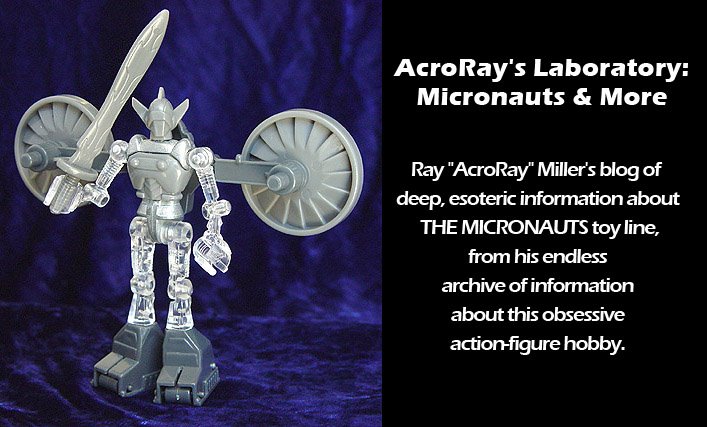Mego spent significant dollars on Micronauts TV advertising. The company hired DuRona Productions – a film company with a long, active history creating TV advertising for the North American toy industry stretching back to the 1950s – to create colorful, lush commercials presenting the Micronauts toys in play, or to parents with appreciations for good products. Nearly two dozen spots were produced from 1977 through to 1980, beginning with dubbed commercials with stop-motion animation from Japan by Takara, to a last spot for the un-released Iguanos and Equestron toys.
The TV spot I’ve presented above can in particular be appreciated by we grown collectors. It is called “Youngminds”, and the spot targets the ‘adult’ viewer – which is apparent when watched. Mego wasn't just selling toys to kids. They were selling the unique values of Micronauts to appreciative adults. A grown man, well-dressed but a little progressive-looking, lectures on the features of the Micronauts toys and their developmental value for children. “Look what I made!” is a powerful statement for a youngster, and something every parent or teacher hears proudly from their youngsters. On the TV commercial’s sets, careful lighting and staging present the Micronauts toys with all the style of fine jewelry or the best Rolex watches. A lush, dense production packed with gorgeous product and all the right words. This spot perfectly encapsulates what the Micronauts line is all about.
It is also worth noting that this particular commercial features young Kenny Abrams – the son of Mego’s legendary president, Marty Abrams. One day, dad asked him to help with a commercial shoot by inviting along some of his new classmates to play with toys. That must have been a great opportunity to make some new friends! Kenny is seen in the spot here:
Mego released their TV commercials to stations via advertising agencies on short, small reels of 16mm film, with a title and spot ID code stamped on the box.
 They would have been played via film-chain – a system to project film directly into a video camera for broadcast – by the individual reel or spliced into a larger reel holding a series of other commercials. Unfortunately, these little reels weren’t intended to last, and over the years – if they weren’t eventually thrown away by stations - generally turn pink from chemical instability and the acids in the brown cardboard boxes they were stored in. On rare occasions you can find them for sale, often from collectors who specialize in film. They may come in their original boxes – possibly unused and culled from larger stock piles of advertising films – or spliced into larger, collected reels. They’re something for the Micronauts collector who has just about everything else. But they’re little more than curiosities if you don’t have easy access to a projector to watch them.
They would have been played via film-chain – a system to project film directly into a video camera for broadcast – by the individual reel or spliced into a larger reel holding a series of other commercials. Unfortunately, these little reels weren’t intended to last, and over the years – if they weren’t eventually thrown away by stations - generally turn pink from chemical instability and the acids in the brown cardboard boxes they were stored in. On rare occasions you can find them for sale, often from collectors who specialize in film. They may come in their original boxes – possibly unused and culled from larger stock piles of advertising films – or spliced into larger, collected reels. They’re something for the Micronauts collector who has just about everything else. But they’re little more than curiosities if you don’t have easy access to a projector to watch them.
I’ve got about a dozen various original Micronauts commercials in this format, and have been fortunate enough to have had several transferred professionally by one of the best post-production companies in the United States. (Their work has been presented during the Super Bowl, for example.) This is all thanks to John DiMaggio, who is a member of the Micropolis Embassy, and several of the staff of NICE SHOES LLC, who also happened to have fondly remembered the Micronauts.
I don’t want this blog to become a stage to present rare things I own that other collectors don’t. But in the case of artifacts like these, they are somewhat rare but can be shared with some effort, and they offer a lot of opportunity to present Micronauts history and archaeology. I’ve released my film-transfers of these spots into ‘the wild’ of the internet and the collecting community in the past, on VHS or via lower-resolution video files. You can see these occasionally on YouTube or in bootleg video collections of Mego or 1970s toy commercials. You can usually spot them because of the inclusion of the countdowns. Now, I’m going back to my source reels to make these available with higher quality via YouTube and my blog. So look for more, with commentary, from AcroRay’s Laboratory in the future.
Questions or recollections? Please leave a comment!




